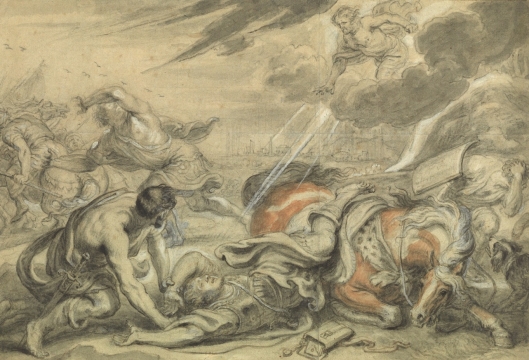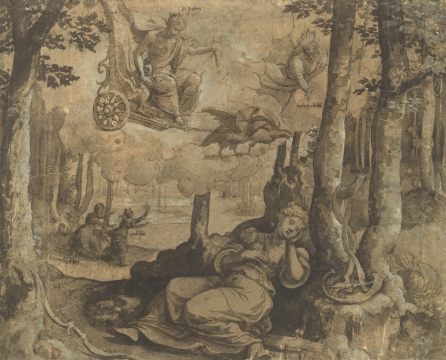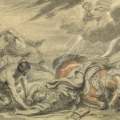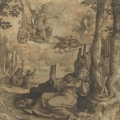Thanks to its Heritage Fund, the Foundation has been able to acquire two drawings that are on show at the exhibition 'De Floris à Rubens'. The works are La Conversion de Saul (The conversion of Saul) by Abraham van Diepenbeeck (1596-1675) and Jupiter et Callisto (Jupiter and Callisto), a 16th century work made by an artist from the circle of Bernard van Orley and Pieter Coecke van Aelst.
Abraham van Diepenbeeck (1596 –1675) was born in the (present) Netherlands, but worked principally in Antwerp. La Conversion de Saul clearly shows the influence of Peter Paul Rubens. Its composition is inspired by a work of Rubens with the same subject, painted around 1621. The scene represents Saul of Tarsus, the future Saint Paul, who, pursuing the early Christians on the road to Damascus, is struck by a great light from the sky, falls from his horse and is questioned by Christ. This drawing is to be seen in the context of a series of tapestries illustrating the Act of the Apostles, which the artist made towards the end of his career and, like many of van Diepenbeeck’s works, the drawing merits closer study. Even in the absence of precise information regarding its function and date, La Conversion de Saul illustrates van Diepenbeeck’s creative and artistic talents, as well as his vitality in interpreting and emulating the art of Rubens.
From a stylistic point of view, the drawing of Jupiter et Callisto pertains to the circle of Bernard van Orley (1490 – 1541) and Pieter Coecke van Aelst (Alost 1502 – Brussels 1550). The graceful, Italianate figures, the shape of the feet and the stylised drapes of the gods in the heavens certainly evoke the manner of Pieter Coecke van Aelst. The technique, on the other hand, as well as the depiction of the foliage in particular, make one think more of three drawings made by the circle of Bernard van Orley. Jupiter, surrounded by clouds, is seated on a chariot pulled by two eagles, whilst Mercury with his caduceus heads straight for a wood. From the heavens they are spying on the sleeping nymph Callisto. So as not to be recognised by Juno, his wife, Jupiter disguises himself as Diana, goddess of the hunt and mistress of Callisto. In the background to the left, we see Jupiter pursuing Callisto. As for the van Diepenbeeck drawing, experts believe that the drawing of Jupiter et Callisto was also a project for a tapestry.
Both drawings will be entrusted to the Royal Museums of Art and History in Brussels.



